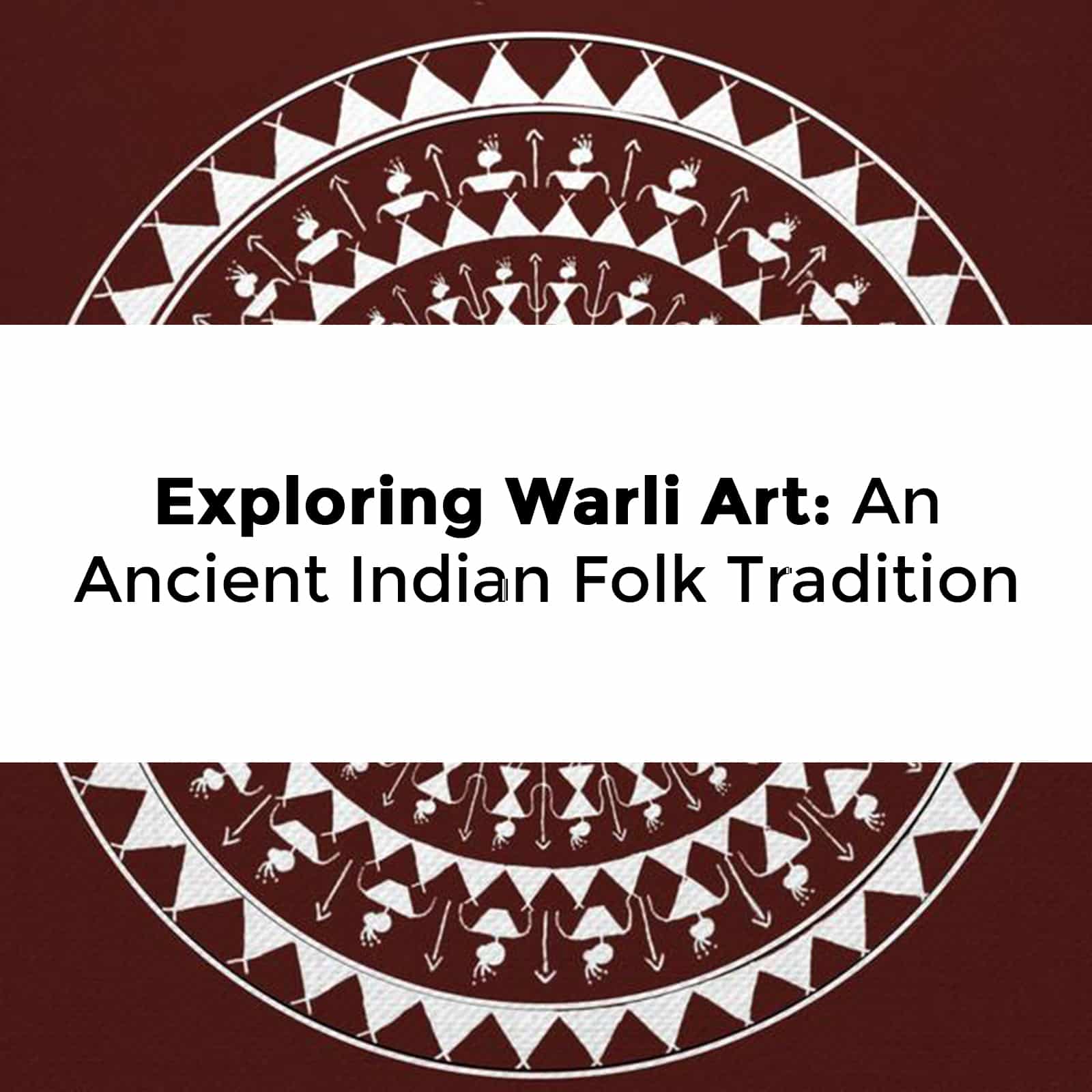Traditional folk painting known as “Warli art” is carried out by the Warli tribe, who are mostly found in Maharashtra, India’s coastal and hilly regions. This art form is an important component of the tribe’s cultural legacy and dates back to 2500–3000 BCE. Warli art, which is distinguished by its very simple style, is more than just a work of art; it tells the story of the tribe’s way of life and beliefs.
The Characteristic Look of Warli Paintings

The signature monochromatic use of white color over a red ochre or mud background is what makes Warli paintings so famous. The main ingredients are a bamboo stick that has been chewed at one end to create a brush and rice paste for the white pigment. The usage of geometric forms, such as squares, triangles, and circles, is what makes this kind of art unique. These forms are used to represent a variety of natural and man-made objects, including people, animals, trees, and huts.
Warli Art's Symbols and Themes
Themes from Warli art center on social life and commemorating events like marriages, festivals, and harvests. These paintings, which frequently include scenes of farming, fishing, hunting, dancing, and housework, highlight the tribe’s symbiotic interaction with the natural world. Three geometric shapes have distinct symbolic meanings: the square denotes a parcel of land or a holy enclosure, the triangle is formed from pointed trees and mountains, and the circle represents the sun and moon.

The Significance of Rituals
The rites and ceremonies of the tribe are closely linked to Warli art. It is a way to call upon the forces of nature and the gods, not just a decorative art. The “Chauk,” or square, is a common theme in Warli paintings and represents the mother goddess Palaghata. Scenes from everyday life are painted around this fundamental subject, highlighting the idea that everything in existence revolves around the divine.
The evolution and modern adaptation

Despite being restricted to the walls of Warli households historically, this art style has changed with time. These paintings have been repurposed by modern Warli artists for canvas, paper, and fabric, opening them up to a wider audience and commercial market. This adaption has given the Warli people a means of subsistence in addition to protecting the art form.
Preservation and promotion.
The promotion and preservation of Warli art must be prioritized. The goal of several groups and artists is to raise public awareness of the cultural value of Warli paintings. Workshops, shows, and partnerships with modern artists support the continued existence and growth of this historic art form.

A tribute to India’s diverse cultural tapestry is Warli painting. Its understated elegance and insightful narrative provide an insight into the way of life and beliefs of the Warli people. Future generations will be inspired and educated by the heritage of the Warli people thanks to our preservation and promotion of this antiquated art form.












